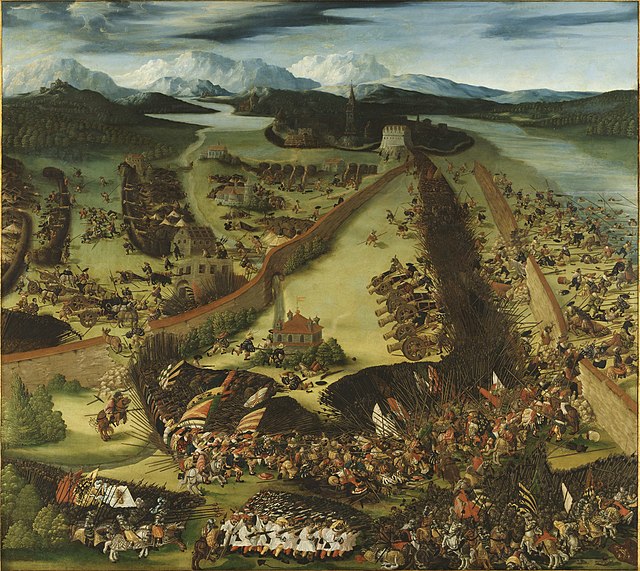Early modern warfare is the era of warfare following medieval warfare. It is associated with the start of the widespread use of gunpowder and the development of suitable weapons to use the explosive, including artillery and firearms; for this reason the era is also referred to as the age of gunpowder warfare. This entire period is contained within the Age of Sail, which characteristic dominated the era's naval tactics, including the use of gunpowder in naval artillery.
"Battle of the Dunes at the siege of Dunkirk, June 14, 1658", 1837 historical painting by Charles-Philippe Larivière depicting the Battle of the Dunes of 1658
Model of city with polygonal fortifications
The 1525 Battle of Pavia in Northern Italy. Fighting in this era became more dreadful as cannons were improved upon their medieval counterparts such as being able to destroy larger fortified walls, fire more shots with greater accuracy and repel incoming enemy charges effectively. The deadly entrapment, concentration and slaughter of troops in Visconti Park rendered it uninhabitable as is the bad omen of warfare.
Gustavus Adolphus at the Battle of Breitenfeld. Adolphus was perhaps the greatest military innovator of this era
Medieval warfare is the warfare of the Middle Ages. Technological, cultural, and social advancements had forced a severe transformation in the character of warfare from antiquity, changing military tactics and the role of cavalry and artillery. In terms of fortification, the Middle Ages saw the emergence of the castle in Europe, which then spread to the Holy Land.
The Battle of Crécy (1346) between the English and the French in the Hundred Years' War.
Hungarian raids in the 10th century. Before the battle of Lechfeld in 955 Medieval Europeans were vulnerable from the Nomadic style of war that came from the Hungarians.
The Château de Falaise in France.
Celje Castle in Slovenia.








